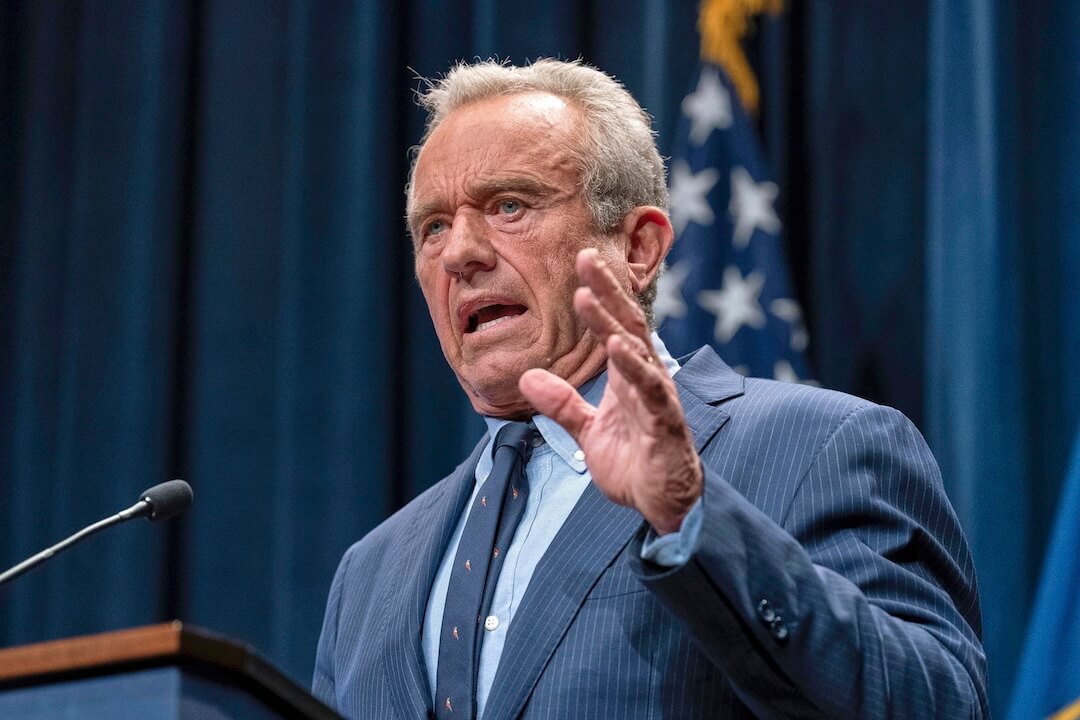 Covering COVID-19 is a daily Poynter briefing of story ideas about the coronavirus for journalists, written by senior faculty Al Tompkins. Sign up here to have it delivered to your inbox every weekday morning.
Covering COVID-19 is a daily Poynter briefing of story ideas about the coronavirus for journalists, written by senior faculty Al Tompkins. Sign up here to have it delivered to your inbox every weekday morning.
One of the key motivations behind the many people who want to keep working at home for as long as they can is that they have kiddos at home and no place to safely send them during the summer. And, who knows, maybe into the fall.
Schools are considering fall schedules that include children staying home some days during the week to reduce the number of students in the classroom at one time. How would parents fit a work schedule around that?
At the same time, the child care industry, most of which is privately owned, is in dire financial trouble. USA Today reported:
Though in many places they were not required to close, since the pandemic began, nearly half of child care facilities nationwide have shut down, some of them indefinitely as the coronavirus forced families to keep kids at home, according to a survey of child care providers conducted by the National Association for the Education of Young Children.
Seventeen percent of providers have closed to everyone except the children of essential personnel. Of the facilities which have remained open, 85% are operating at less than 50% of enrollment capacity and the majority of those are operating at less than 25% of capacity, the survey conducted in April found.
Day care centers said they cannot afford to operate if they can only allow a fraction of their pre-COVID-19 capacity. The centers said their costs have risen because of the additional cleaning, which now has to go on nonstop. And the United States’ child care industry is one of the largest in the world, mostly because of our cultural norm of parents not staying home to care for young children.
As a result, child care is one of the biggest monthly expenses for families. Depending on where you live, child care could cost your family 20% of your income. Washington, D.C., Massachusetts, California and Minnesota have the most expensive day care costs, according to CNBC:
And that’s if you’re entering parenthood with a partner. Single parents will spend even more to ensure their children are well-looked after while they’re at work. The cost of center-based infant care exceeds 27% of the median household income for single parents in all states, according to data collected by Child Care Aware of America, a nonprofit organization focused on improving the affordability of child care in the U.S.
Child care fees for families with two children cost more than the average mortgage payment in 35 states and the District of Columbia, while a year of infant care costs more in 28 states than the average tuition bill for a year at a public college, Child Care Aware found.
Child Care Aware is maintaining a constantly updated map that shows state regulations around child care centers reopening.
There is a growing notion that in order for businesses to lure workers back, the businesses may have a new role to play in helping with child care, which comes at just the time when businesses do not need a new expense.
Before COVID-19, child care cost businesses about $12.7 billion annually because of their employees’ child care challenges.
Here is how fragile the child care system is right now. In Bell County, Texas, the county health officials asked a local child care center to close because a person associated with the facility tested positive for COVID-19. The center serves 160 children.
In Minnesota, some medical students built a network of volunteers to provide child care for first responders. StatNews reported:
The result was a volunteer network throughout the state that matches medical students with health care workers in need of child care, pet-sitting, or just help with errands like grocery runs. In short order, the group, known as MN Covidsitters, has drawn together more than 350 volunteers and provided support to a couple of hundred health care workers — a number that grows every day.
But volunteers won’t solve a long-term need.
The Washington Post explained how Congress’ Families First Coronavirus Act built in some protections for some workers that labor lawyers said employers may not understand:
Under the Families First Coronavirus Response Act, workers at employers with fewer than 500 employees are eligible for up to 12 weeks of paid sick leave and expanded family and medical leave at two-thirds of their regular pay. The provisions apply through the end of 2020. (Businesses with fewer than 50 employees may qualify for an exemption).
The law created new forms of paid leave that employers are not accustomed to managing, according to Cynthia Blevins Doll, an attorney with the firm Fisher Phillips who represents employers. With new laws going into effect quickly, she fears some employers may misread employees’ requests and deny the leave, not realizing they could be violating the law.
Christine Dinan, senior staff attorney for A Better Balance, which operates a help line about work and family legal issues, said some callers said they had been denied leave or paid time off for child care. As workplaces open back up, “those tensions are really going to be on prime display,” she said.
Notre Dame’s fairly brilliant scheduling idea
I have this theory that my family is tired of hearing that the worst outbreaks of sickness and crud always seem to happen right after Thanksgiving. Now, we know there are reasons that viruses thrive in colder and less humid weather, but my theory is more practical than that. People travel home from all parts of the country and world and return with what was a regional coughing crud, which spreads from border to border in a few days.
Now, Notre Dame has come up with what I think is a brilliant idea that conforms with my highly unscientific theory on the spread of crud. Notre Dame is planning to start classes a couple of weeks early, work through what would be a fall break and then dismiss classes for the semester at Thanksgiving. No coming back in December for finals and the annual exchange of germs.
For schools that are hellbent on reopening this fall, Notre Dame came up with an idea that makes a lot of sense to me and allows the school to pivot fast if there is an autumn outbreak. A release from Dennis Brown, Notre Dame’s chief spokesman, said:
To accommodate a return to remote instruction in the event of an outbreak of the virus, Notre Dame faculty have been asked to prepare fall courses with two distinct periods of equal length to allow for a smoother transition, should the University be forced to begin on-campus activities later in the fall or end it earlier than scheduled.
Faculty also have been asked to prepare to offer courses both in person and through remote instruction, the latter of which will allow any student in isolation or quarantine to continue to participate.
A virus is killing rabbits. Should you worry?
A month ago we were getting worked up over the invasion of “murder hornets,” which is a name perfect for scary headlines. Now biologists warn us that something is killing rabbits around the U.S. and it is a virus. It’s not COVID-19, but like the coronavirus, it may have jumped across species.
Let’s clear the deck of worries for a moment. There is no known threat of transmission from rabbits to humans or dogs or cats.
The official name is Rabbit Hemorrhagic Disease Virus type 2. It may have come from Europe and may have been around in some form for more than a decade. The first North American detection of the disease was in 2018 on Vancouver Island, Canada.
I am not starting a tin hat conspiracy thing but Vancouver Island was also where biologists were tracking the murder hornets. Maybe that is because so much of the Canadian bee population is in that area. And by the way, bee experts hate the name “murder hornet.”
Back on the subject of rabbits, the critters are an important food source for raptors and reptiles, so sick rabbits could cause a food chain problem. Here in Florida, I have rarely seen a wild bunny in the decade since coyotes took up residence around the golf courses.
Some not so good news about climate change in COVID-19 days
If you were looking for one good thing to say about these COVID-19 days it might be that carbon emissions this year may be the lowest since World War II. We are driving less and our factories have been closed down.
But there are a couple of ways to look at the data just released. One is optimistic and one is realistic. I might as well not sugarcoat this. Here is what Mother Jones reported, even while the COVID-19 slowdown means we are pumping less carbon into the atmosphere:
Based on National Oceanic and Atmospheric Association measurements taken in Hawaii since 1958, the atmospheric concentration of carbon hit a new record 416.21 parts per million in April — the highest it’s reached in 800,000 years based on ice core records. Experts at the science news outlet Climate Central liken what’s happening to a plugged-up bathtub where “slowing the flow doesn’t mean the tub will stop filling.” Another reminder that climate change isn’t slowing is that 2020 has a very good chance of being the hottest year we’ve ever recorded. For context, the world has to hit at least a 7.6% drop in total carbon emissions every year for the next decade in order to contain warming well below a disastrous 2 degrees Celsius.
Without a doubt, we are causing less damage in these months of shutdown than we have been causing. Mother Jones reported that the estimates of how much less vary, but all estimates agree on the trend:
The outlet Carbon Brief estimated a 5% global drop in carbon, while the International Energy Agency estimated 8%. Last week, the U.S. Energy Information Agency projected that carbon emissions from the electric sector alone will fall 11% nationally this year, and renewable use is on track to eclipse coal for the first time ever. These developments seemed impossible a few months ago.
There is no reason to believe that this chart will look like this in the months ahead as businesses go back to work, even at a reduced level. The changes in our behaviors that produced these drops are temporary changes, not lasting policy changes.
The Guardian put the data in perspective:
“This is a really big fall, but at the same time, 83% of global emissions are left, which shows how difficult it is to reduce emissions with changes in behavior,” said Corinne Le Quéré, a professor of climate change at the University of East Anglia, and lead author of the study published in the journal Nature Climate Change. “And it is not desirable this is not the way to tackle climate change.”
The way we work now
My new disney analyst…. pic.twitter.com/MM1Txz0N36
— Stephanie Ruhle (@SRuhle) May 18, 2020
We’ll be back tomorrow with a new edition of Covering COVID-19. Sign up here to get it delivered right to your inbox.
Al Tompkins is senior faculty at Poynter. He can be reached at atompkins@poynter.org or on Twitter, @atompkins.








